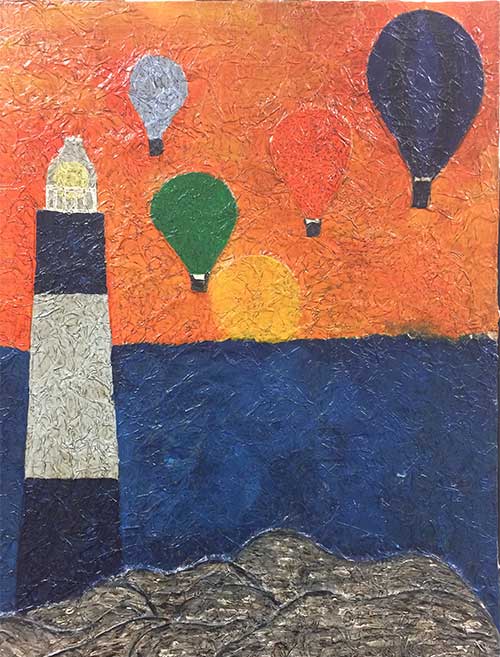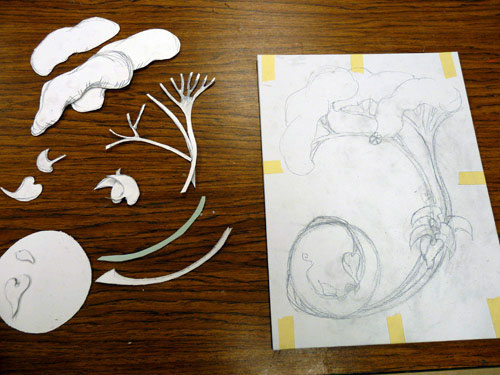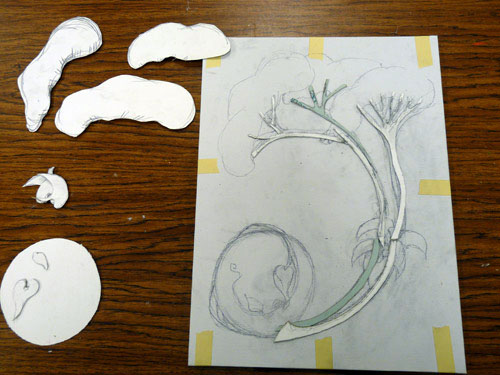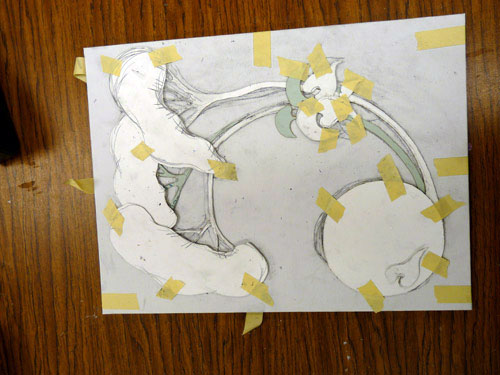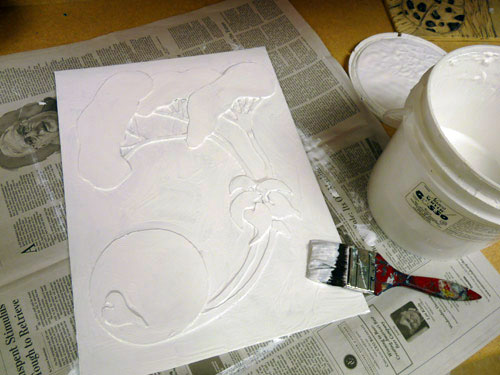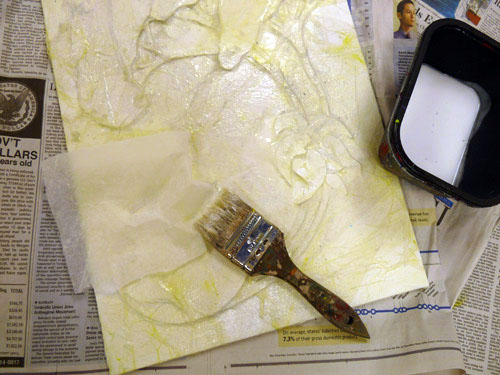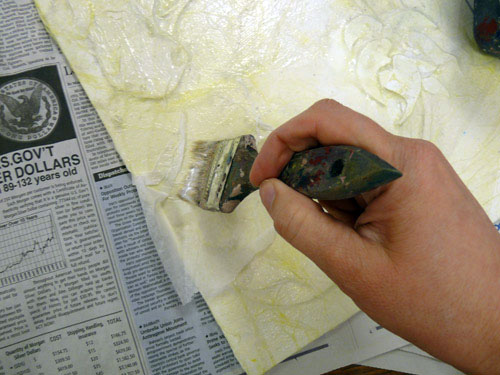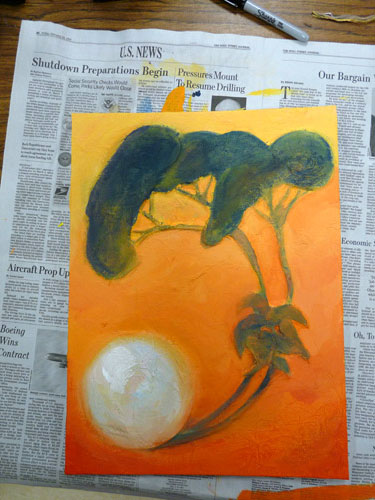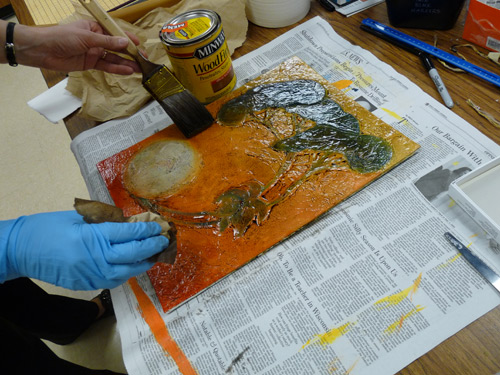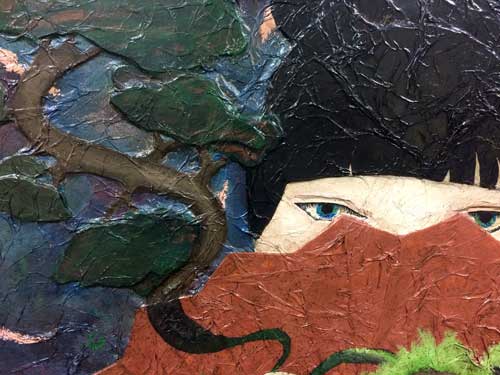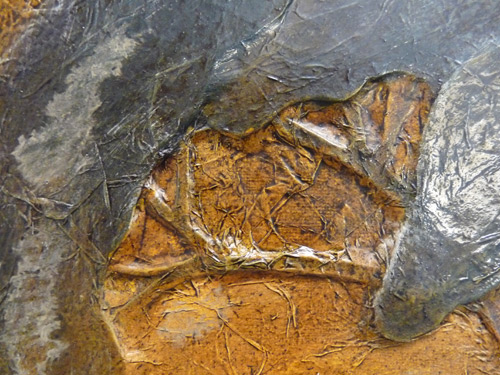
Objectives: Students learn about new collage techniques: layering, staining, and dry brush.
Essential questions:
1. What are the steps you take to create a collage?
2. How does staining change a color?
3. Why do you use dry brush technique?
Lamination - is the technique of building up surfaces in multiple layers to achieve a certain texture, look, feel, etc.
WI State Standards:
- AA Cr11h
Plan: Formulate original concepts by practice, experimentation, and revision. (planning/experimentation) - AA Cr12h
Make: Create works of art that introduce students to media, care of tools, and basic craftsmanship skills.
(skills) - AA Pr10h
Develop Meaning: Curate a body of work incorporating personal, historical and contemporary art to communicate one or more points of view.
(aesthetics / communication)
Learning targets:
- Use planning (sketching) to develop a unique outcome
- Create an original artwork
- Combine multiple media to achieve an aesthetic effect.
- Learn about mandala art form
- Create a mandala and make it personal
- Use shape contrast: organic shapes vs. geometric shapes
- Line stylizing
- Image transfer
- Composition balance: circular design
- Exercise and demonstrate use and mastery of the elements of art
- Exercise and demonstrate use and mastery of colored pencil drawing and shading techniques
- mixed media color application:
- colored pencils
- watercolor pencils
- watercolor
- concentrated watercolors and salt
- optional: gel pens .
in a nutshell
1. Standard AA Cr11h (planning/experimentation): Research and prep work.
2. Standards AA Cr12h (skills): Drawing, cutting, laminating, painting
3. AAPr10h (aesthetics/communication): complexity, craftsmanship and the message of the artwork.


